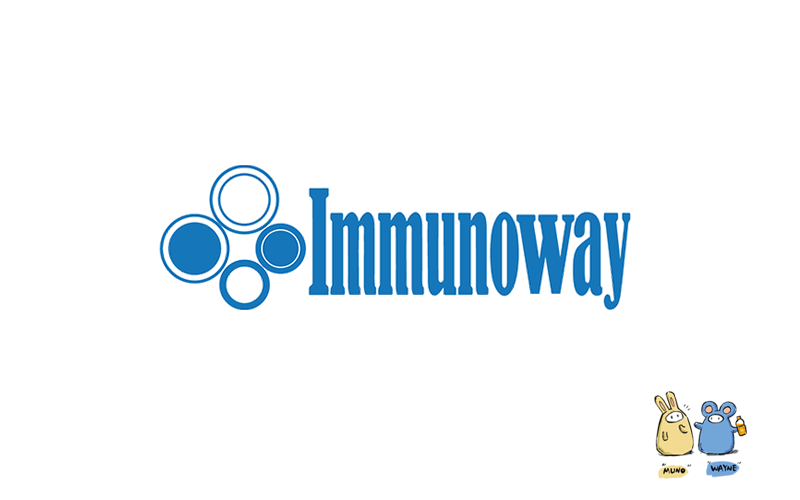
Catalog: YP1623
Size
Price
Status
Qty.
200μL
$600.00
In stock
0
100μL
$340.00
In stock
0
50μL
$190.00
In stock
0
Add to cart


Collected


Collect
Main Information
Target
OGT
Host Species
Rabbit
Reactivity
Human, Mouse, Rat
Applications
WB, ELISA
MW
115kD (Calculated)
Conjugate/Modification
Phospho
Detailed Information
Recommended Dilution Ratio
WB 1:1000-2000; ELISA 1:5000-20000
Formulation
Liquid in PBS containing 50% glycerol, 0.5% BSA and 0.02% sodium azide.
Specificity
This antibody detects endogenous levels of Human,Mouse,Rat OGT (phospho Thr454).The name of modified sites may be influenced by many factors, such as species (the modified site was not originally found in human samples) and the change of protein sequence (the previous protein sequence is incomplete, and the protein sequence may be prolonged with the development of protein sequencing technology). When naming, we will use the "numbers" in historical reference to keep the sites consistent with the reports. The antibody binds to the following modification sequence (lowercase letters are modification sites):YRtAL
Purification
The antibody was affinity-purified from rabbit serum by affinity-chromatography using specific immunogen.
Storage
-15°C to -25°C/1 year(Do not lower than -25°C)
Concentration
1 mg/ml
MW(Calculated)
115kD
Modification
Phospho
Clonality
Polyclonal
Isotype
IgG
Related Products
Antigen&Target Information
Immunogen:
Synthesized peptide derived from human OGT (phospho Thr454)
show all
Specificity:
This antibody detects endogenous levels of Human,Mouse,Rat OGT (phospho Thr454).The name of modified sites may be influenced by many factors, such as species (the modified site was not originally found in human samples) and the change of protein sequence (the previous protein sequence is incomplete, and the protein sequence may be prolonged with the development of protein sequencing technology). When naming, we will use the "numbers" in historical reference to keep the sites consistent with the reports. The antibody binds to the following modification sequence (lowercase letters are modification sites):YRtAL
show all
Gene Name:
OGT
show all
Protein Name:
OGT (phospho Thr454)
show all
Other Name:
UDP-N-acetylglucosamine--peptide N-acetylglucosaminyltransferase 110 kDa subunit ;
O-GlcNAc transferase subunit p110 ;
O-linked N-acetylglucosamine transferase 110 kDa subunit ;
OGT ;
O-GlcNAc transferase subunit p110 ;
O-linked N-acetylglucosamine transferase 110 kDa subunit ;
OGT ;
show all
Database Link:
Background:
This gene encodes a glycosyltransferase that catalyzes the addition of a single N-acetylglucosamine in O-glycosidic linkage to serine or threonine residues. Since both phosphorylation and glycosylation compete for similar serine or threonine residues, the two processes may compete for sites, or they may alter the substrate specificity of nearby sites by steric or electrostatic effects. The protein contains multiple tetratricopeptide repeats that are required for optimal recognition of substrates. Alternatively spliced transcript variants encoding distinct isoforms have been found for this gene. [provided by RefSeq, Oct 2009],
show all
Function:
Catalytic activity:UDP-N-acetyl-D-glucosamine + peptide = UDP + N-acetyl-beta-D-glucosaminyl-peptide.,Function:Addition of nucleotide-activated sugars directly onto the polypeptide through O-glycosidic linkage with the hydroxyl of serine or threonine.,online information:UDP-N-acetylglucosamine--peptide N-acetylglucosaminyltransferase 110kDa subunit,pathway:Protein modification; protein glycosylation.,similarity:Belongs to the O-GlcNAc transferase family.,similarity:Contains 13 TPR repeats.,subunit:Heterotrimer of two 110 kDa and one 70 kDa subunits. It is not known if the 70 kDa subunit is encoded by a separate gene or is the product of either of a proteolytic degradation or an alternative initiation of the 110 kDa subunit (By similarity). Interacts with HCFC1.,tissue specificity:Highly expressed in pancreas and to a lesser extent in skeletal muscle, heart, brain and placenta. Present in trace amounts in lung and liver.,
show all
Cellular Localization:
Nucleus . Cytoplasm . Predominantly localizes to the nucleus. .; [Isoform 2]: Mitochondrion . Membrane . Associates with the mitochondrial inner membrane. .; [Isoform 3]: Cytoplasm . Nucleus . Cell membrane . Mitochondrion membrane . Cell projection . Mostly in the nucleus. Retained in the nucleus via interaction with HCFC1 (PubMed:21285374). After insulin induction, translocated from the nucleus to the cell membrane via phosphatidylinositide binding. Colocalizes with AKT1 at the plasma membrane. TRAK1 recruits this protein to mitochondria. In the absence of TRAK1, localizes in cytosol and nucleus (By similarity). .; [Isoform 4]: Cytoplasm. Nucleus.
show all
Tissue Expression:
Highly expressed in pancreas and to a lesser extent in skeletal muscle, heart, brain and placenta. Present in trace amounts in lung and liver.
show all
Research Areas:
>>Other types of O-glycan biosynthesis ;
>>Insulin resistance
>>Insulin resistance
show all
Reference Citation({{totalcount}})
Catalog: YP1623
Size
Price
Status
Qty.
200μL
$600.00
In stock
0
100μL
$340.00
In stock
0
50μL
$190.00
In stock
0
Add to cart


Collected


Collect
Recently Viewed Products
Clear allPRODUCTS
CUSTOMIZED
ABOUT US
Toggle night Mode
{{pinfoXq.title || ''}}
Catalog: {{pinfoXq.catalog || ''}}
Filter:
All
{{item.name}}
{{pinfo.title}}
-{{pinfo.catalog}}
Main Information
Target
{{pinfo.target}}
Reactivity
{{pinfo.react}}
Applications
{{pinfo.applicat}}
Conjugate/Modification
{{pinfo.coupling}}/{{pinfo.modific}}
MW (kDa)
{{pinfo.mwcalc}}
Host Species
{{pinfo.hostspec}}
Isotype
{{pinfo.isotype}}
Product {{index}}/{{pcount}}
Prev
Next
{{pvTitle}}
Scroll wheel zooms the picture
{{pvDescr}}


















